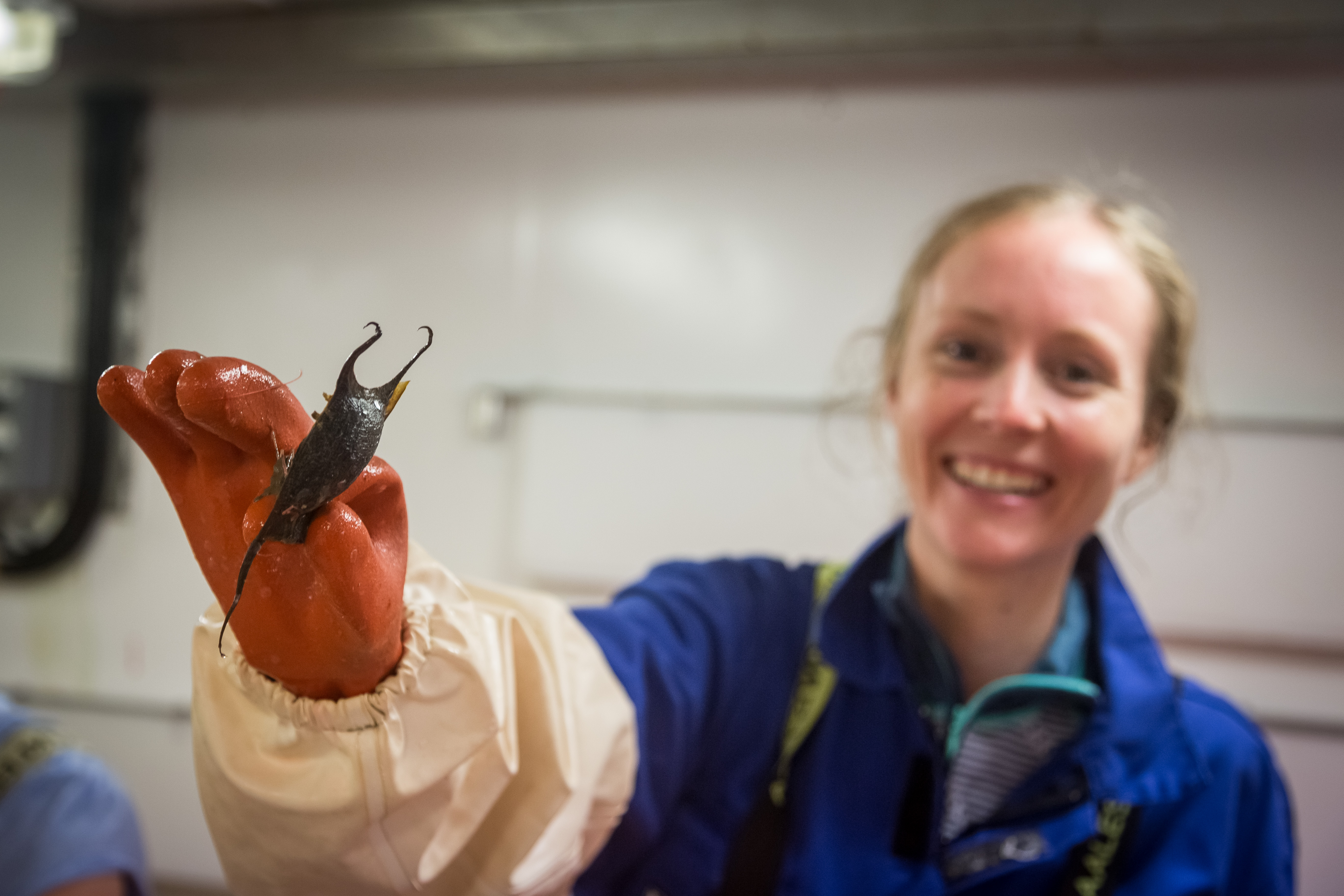Topic: Skates

The skates swim in an elegant wavy manner.
Photo: Erling Svensen / IMR
Thornback ray (Raja clavata)
Photo: Erling Svensen / IMR
Starry ray (Amblyraja radiata)
Photo: Anette Karlsen / IMR
Arctic skate (Amblyraja hyperborea)
Photo: Thomas de Lange Wenneck / IMRPublished: 29.07.2020 Updated: 22.08.2024

Photo: Eirik Johannessen, IMR
Unlike most bony fishes, cartilaginous fishes lack a swim bladder. Cartilage is less dense than bone, which together with their enlarged pectoral fins allows them to easily control their position in the water.
Skates have a characteristically flattened body shape adapted to life on the sea floor, with eyes on top of their head and mouth on their ventral side. They often have a long and thin tail which is sometimes adorned with thorns (depending on the species), and their enlarged pectoral fins are fused to the body. They swim in an elegant wavy manner.
Skates are oviparous, laying characteristic egg capsules known as mermaid’s purses within which the embryos develop.
It can be difficult to distinguish between the different skate species in Norwegian waters. The best characteristics to look for include their size, body shape, number and position of thorns on the tail, and coloration.
The following species are typically found in Norway
Spotted ray – Raja montagui
Cuckoo ray – Leucoraja naevus
Spinytail skate – Bathyraja spinicauda
Sailray – Rajella lintea
Arctic skate – Amblyraja hyperborea
Starry ray – Amblyraja radiata
Shagreen ray – Leucoraja fullonica
Thornback ray – Raja clavata
Blonde ray – Raja brachyura
Round ray – Rajella fyllae
Sandy ray – Leucoraja circularis
Longnosed skate – Dipturus oxyrinchus
Common flapper skate – Dipturus intermedius (D. batis kompleks)
Norwegian skate – Dipturus nidarosiensis

